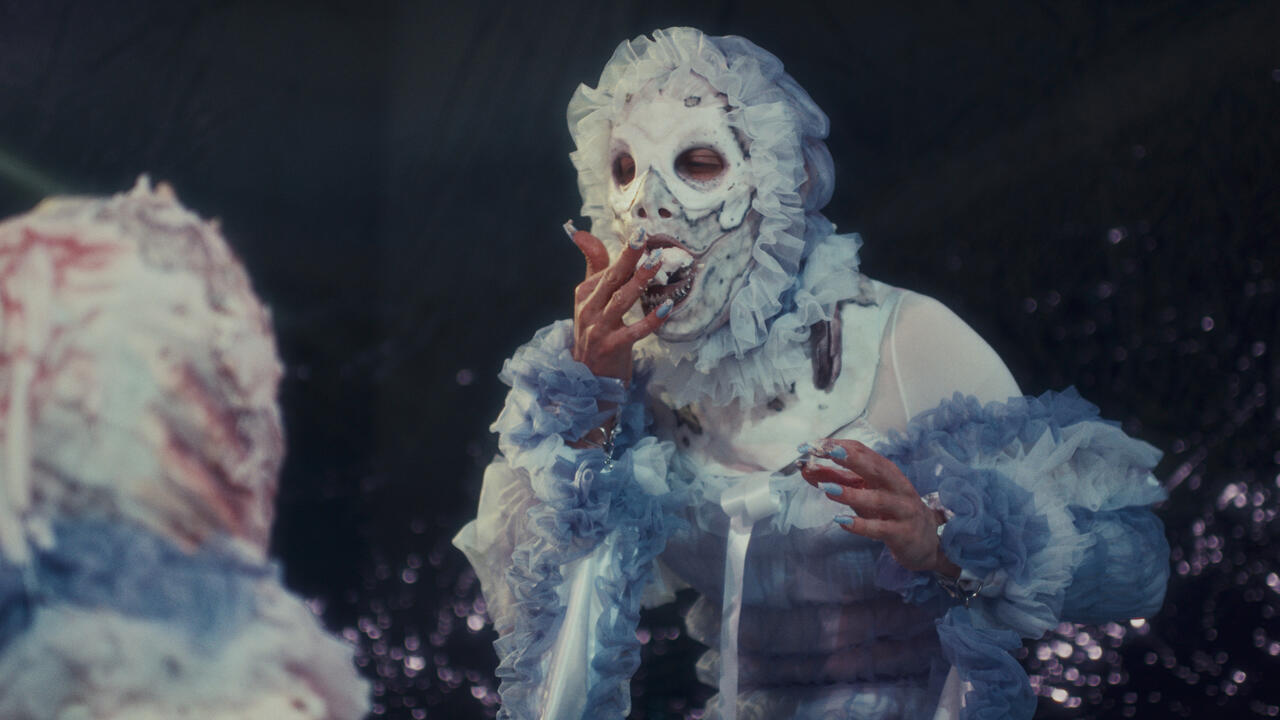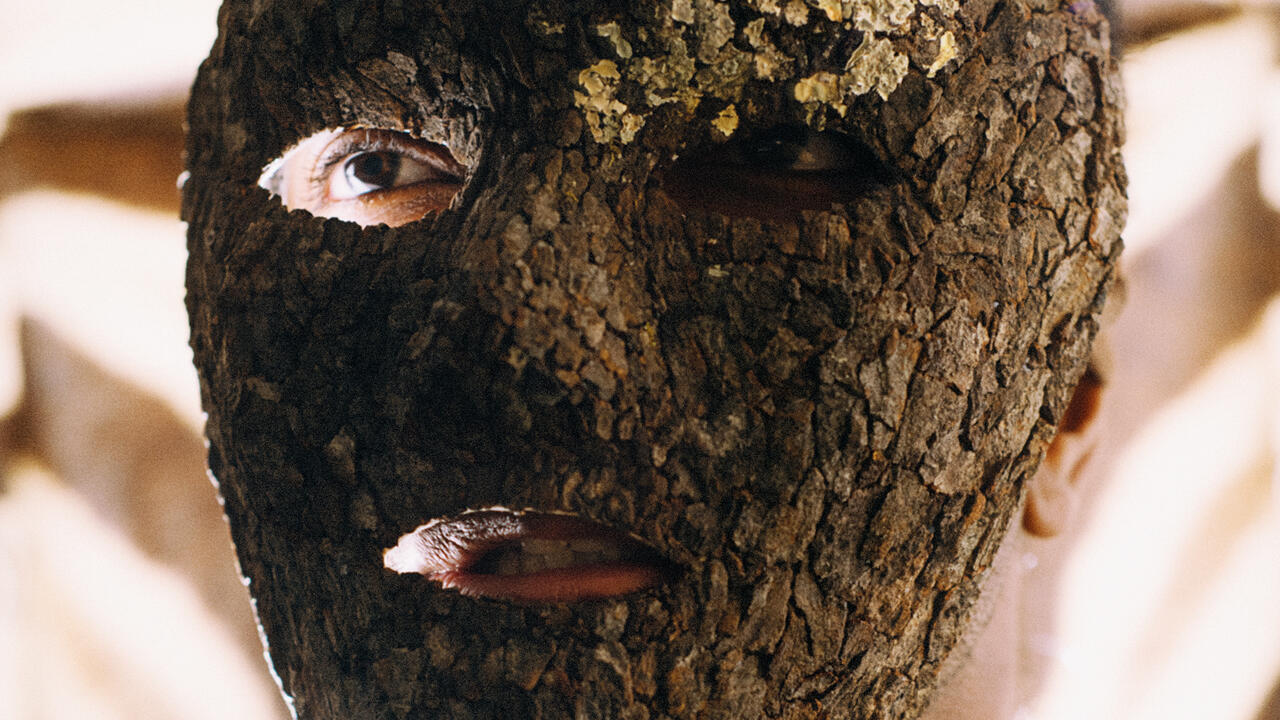Julien Creuzet: After the Storm
Bétonsalon & Fondation d'enterprise Ricard, Paris, France
Bétonsalon & Fondation d'enterprise Ricard, Paris, France

Native to the islands of the Caribbean, the manchineel tree is known in the West by the name the conquistadors gave it. The manzanilla de la muerte – little apple of death – grows along the shore, its fragrant yet toxic green fruit tempting sailors newly arrived from the high seas.
The treacherousness of manchineels is evoked in the haunting, beautiful title of Julien Creuzet’s exhibition at Fondation d’entreprise Ricard: ‘All that sea distance, for the oil filaments of the manchineel to stop our heartbeats. – The rain made that possible (...)’ The other part of this dual show runs at Bétonsalon under a different title, extracted from the same poem, written by the artist. The Bétonsalon title begins ‘The rain made that possible’ and ends ‘All that sea distance’, such that the two follow one another in an endless cycle, like waves lapping upon the shore.

The sea – what it brings and what it takes; what its distance separates and its depths conceal – is central to these exhibitions. The artist himself grew up in Martinique – which is to say that his identity, in part, has been defined by the great in-betweeness of the water, the outre-mer that separates France from its overseas administrative territories.
Each show is a constellation of objects that might have been deposited by a storm tide. Creuzet has previously referred to his whole-show installations as ‘archipelagos’, borrowing Edouard Glissant’s vocabulary of ‘mondiality’ – the influential Martiniquais philosopher’s notion of a global community that preserves diversity and difference. Clumped mattings of natural and synthetic materials are circled with threads that evoke both fishing nets and the paralysing tentacles of the Portuguese man o’war. (Named for the armed galleons whose wind-inflated sails their floating polyps resemble, the transparent tentacles of these colonies of organisms can extend for up to 50 metres underwater. They offer an apt metaphor for the insidious residues of European imperialism.) A nacreous shell balances on a slice of Nike shoe; a sponge, air-dried and desiccated, nestles next to a row of aeroplane seats that seem to have landed sideways from the sky on a new crossing of an old journey.
At Bétonsalon, Chinese-made plastic mats, woven with African patterns, fray like the tops of mangled sugarcane or grasses in the sand-dunes – overlayingcontemporary and historical trade networks, and the circulation of cultural signifiers in a hyper-connected world. Plastics, products of the petrochemicals industry that defines the global economy even as it threatens to destroy it, are conspicuously present here – although, as with the grassy mats and the green plastic beads scattered on the floor like sand-grains, they often evoke natural forms. Ecological questions are complexly layered with social ones.

More than archipelagos, to me these exhibitions feel like mangroves: their trees evoked by the wrapped, vertical, twig-like forms suspended from the ceilings at both venues. They are filled with the mysteries and shadows that this edge-of-water zone holds in the Caribbean imaginary. Two ghostly, prone anthropomorphic figures, both black – a flattened silhouette at Bétonsalon and a mesh-wrapped baby with a face resembling an African mask at Fondation Ricard – recall the horrors of the middle passage, as well as more recent European tragedies of migration.
Both spaces resonate with the sound of the artist’s voice, as he incants songs drawn from the title poem. At Bétonsalon, a refrain repeats over a sparse melody: ‘Il faut refaire le tour […] il faut refaire le temps’. Creuzet, who often uses poetry and music in his work, is at his most mesmeric here, taking his words off the page and making them felt, physical. ‘We need to go back […] we need to remake time’: for all the violence and difficulty of his themes, I get the sense that Creuzet’s worldview, like Glissant’s, is generous, perhaps even hopeful. Maybe, in the thickets of the mangrove, there is a way forward together.
Main image: Julien Creuzet, 'La pluie a rendu cela possible' (The rain made this possible), 2018, installation view, Bétonsalon, Paris
























